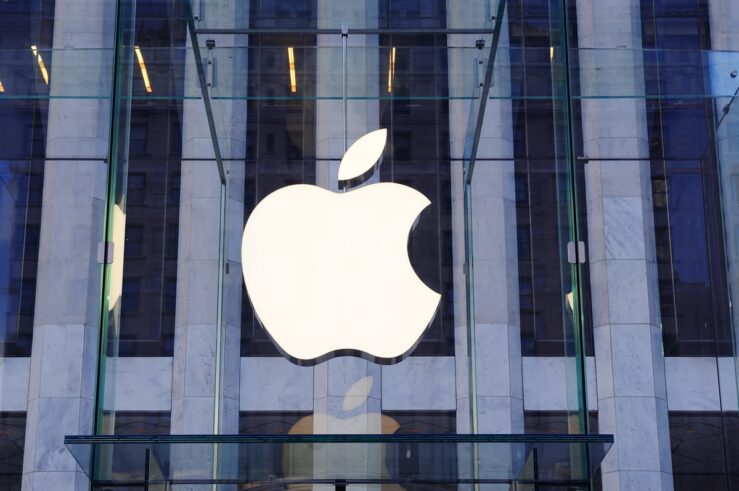Writing in the New York Times, journalist E. Tammy Kim recently called for Seattle and other pricey, high-tech hubs to impose a special tax on Microsoft and other large employers of high-paid workers. Efficiency demands such a tax, she says, because those companies are imposing a negative externality: By driving up demand for housing, they are causing rents and home prices to rise, which adversely affects city residents.
Arguing that her proposal is “akin to a pollution tax,” Ms. Kim writes:
A half-century ago, it seemed inconceivable that factories, smelters or power plants should have to account for the toxins they released into the air. But we have since accepted the idea that businesses should have to pay the public for the negative externalities they cause.
It is true that negative externalities—costs imposed on people who are “external” to the process creating those costs (as when a factory belches rancid smoke on its neighbors)—are often taxed. One justification for such a tax is fairness: It seems inequitable that one party would impose costs on another; justice may demand that the victimizer pay. The justification cited by the economist who first proposed such taxes, though, was something different. In his 1920 opus, The Economics of Welfare, British economist A.C. Pigou proposed taxing behavior involving negative externalities in order to achieve efficiency—an increase in overall social welfare.
With respect to the proposed tax on Microsoft and other high-tech employers, the fairness argument seems a stretch, and the efficiency argument outright fails. Let’s consider each.
To achieve fairness by forcing a victimizer to pay for imposing costs on a victim, one must determine who is the victimizer. Ms. Kim’s view is that Microsoft and its high-paid employees are victimizing (imposing costs on) incumbent renters and lower-paid homebuyers. But is that so clear?
Microsoft’s desire to employ high-skilled workers, and those employees’ desire to live near their work, conflicts with incumbent renters’ desire for low rent and lower paid homebuyers’ desire for cheaper home prices. If Microsoft got its way, incumbent renters and lower paid homebuyers would be worse off.
But incumbent renters’ and lower-paid homebuyers’ insistence on low rents and home prices conflicts with the desires of Microsoft, the high-skilled workers it would like to hire, and local homeowners. If incumbent renters and lower paid homebuyers got their way and prevented Microsoft from employing high-wage workers, Microsoft, its potential employees, and local homeowners would be worse off. Who is the victim here?
As Nobel laureate Ronald Coase famously observed, in most cases involving negative externalities, there is a reciprocal harm: Each party is a victim of the other party’s demands and a victimizer with respect to its own. When both parties are victimizing each other, it’s hard to “do justice” by taxing “the” victimizer.
A desire to achieve efficiency provides a sounder basis for many so-called Pigouvian taxes. With respect to Ms. Kim’s proposed tax, however, the efficiency justification fails. To see why that is so, first consider how it is that Pigouvian taxes may enhance social welfare.
When a business engages in some productive activity, it uses resources (labor, materials, etc.) to produce some sort of valuable output (e.g., a good or service). In determining what level of productive activity to engage in (e.g., how many hours to run the factory, etc.), it compares its cost of engaging in one more unit of activity to the added benefit (revenue) it will receive from doing so. If its so-called “marginal cost” from the additional activity is less than or equal to the “marginal benefit” it will receive, it will engage in the activity; otherwise, it won’t.
When the business is bearing all the costs and benefits of its actions, this outcome is efficient. The cost of the inputs used in production are determined by the value they could generate in alternative uses. (For example, if a flidget producer could create $4 of value from an ounce of tin, a widget-maker would have to bid at least $4 to win that tin from the flidget-maker.) If a business finds that continued production generates additional revenue (reflective of consumers’ subjective valuation of the business’s additional product) in excess of its added cost (reflective of the value its inputs could create if deployed toward their next-best use), then making more moves productive resources to their highest and best uses, enhancing social welfare. This outcome is “allocatively efficient,” meaning that productive resources have been allocated in a manner that wrings the greatest possible value from them.
Allocative efficiency may not result, though, if the producer is able to foist some of its costs onto others. Suppose that it costs a producer $4.50 to make an additional widget that he could sell for $5.00. He’d make the widget. But what if producing the widget created pollution that imposed $1 of cost on the producer’s neighbors? In that case, it could be inefficient to produce the widget; the total marginal cost of doing so, $5.50, might well exceed the marginal benefit produced, which could be as low as $5.00. Negative externalities, then, may result in an allocative inefficiency—i.e., a use of resources that produces less total value than some alternative use.
Pigou’s idea was to use taxes to prevent such inefficiencies. If the government were to charge the producer a tax equal to the cost his activity imposed on others ($1 in the above example), then he would capture all the marginal benefit and bear all the marginal cost of his activity. He would thus be motivated to continue his activity only to the point at which its total marginal benefit equaled its total marginal cost. The point of a Pigouvian tax, then, is to achieve allocative efficiency—i.e., to channel productive resources toward their highest and best ends.
When it comes to the negative externality Ms. Kim has identified—an increase in housing prices occasioned by high-tech companies’ hiring of skilled workers—the efficiency case for a Pigouvian tax crumbles. That is because the external cost at issue here is a “pecuniary” externality, a special sort of externality that does not generate inefficiency.
A pecuniary externality is one where the adverse third-party effect consists of an increase in market prices. If that’s the case, the allocative inefficiency that may justify Pigouvian taxes does not exist. There’s no inefficiency from the mere fact that buyers pay more. Their loss is perfectly offset by a gain to sellers, and—here’s the crucial part—the higher prices channel productive resources toward, not away from, their highest and best ends. High rent levels, for example, signal to real estate developers that more resources should be devoted to creating living spaces within the city. That’s allocatively efficient.
Now, it may well be the case that government policies thwart developers from responding to those salutary price signals. The cities that Ms. Kim says should impose a tax on high-tech employers—Seattle, San Francisco, Austin, New York, and Boulder—have some of the nation’s most restrictive real estate development rules. But that’s a government failure, not a market failure.
In the end, Ms. Kim’s pollution tax analogy fails. The efficiency case for a Pigouvian tax to remedy negative externalities does not apply when, as here, the externality at issue is pecuniary.
For more on pecuniary versus “technological” (non-pecuniary) externalities and appropriate responses thereto, check out Chapter 4 of my recent book, How to Regulate: A Guide for Policymakers.




